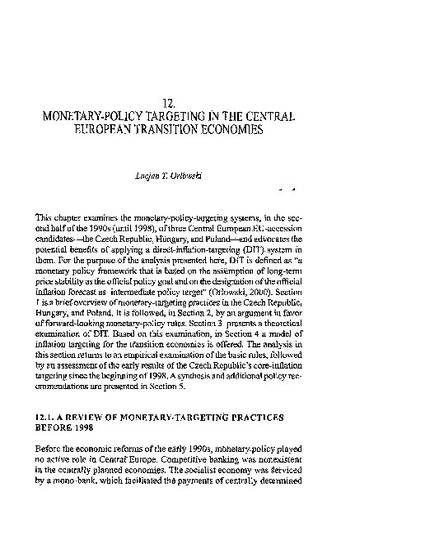
This chapter examines the monetary-policy-targeting systems, in the second half of the 1990s (until 1998), of three Central European EU-accession candidates—the Czech Republic, Hungary, and Poland--and advocates the potential benefits of applying a direct-inflation-targeting (DIT) system in them. For the purpose of the analysis presented here, DIT is defined as "a monetary policy framework that is based on the assumption of long-term price stability as the official policy goal and on the designation of the official inflation forecast as intermediate policy target" (Orlowski, 2000). Section 1 is a brief overview of monetary-targeting practices in the Czech Republic Hungary, and Poland. It is followed, in Section 2, by an argument in favor of forward-looking monetary-policy rules. Section 3 presents a theoretical examination of DIT. Based on this examination, in Section 4 a model of inflation targeting for the transition economies is offered. The analysis in this section returns to an empirical examination of the basic rules, followed by an assessment of the early results of the Czech Republic's core-inflation targeting since the beginning of 1998. A synthesis and additional policy recommendations are presented in Section 5.
Orlowski, L. (2003). Monetary-policy targeting in the Central European transition economies. In M. Dabrowski (Ed.), Disinflation in transition economies (pp. 329-348). Central European University Press. Doi: 10.7829/j.ctv280b85w.19

ISBN: 9789639241299 (cloth); 9789639241503 (pbk.)